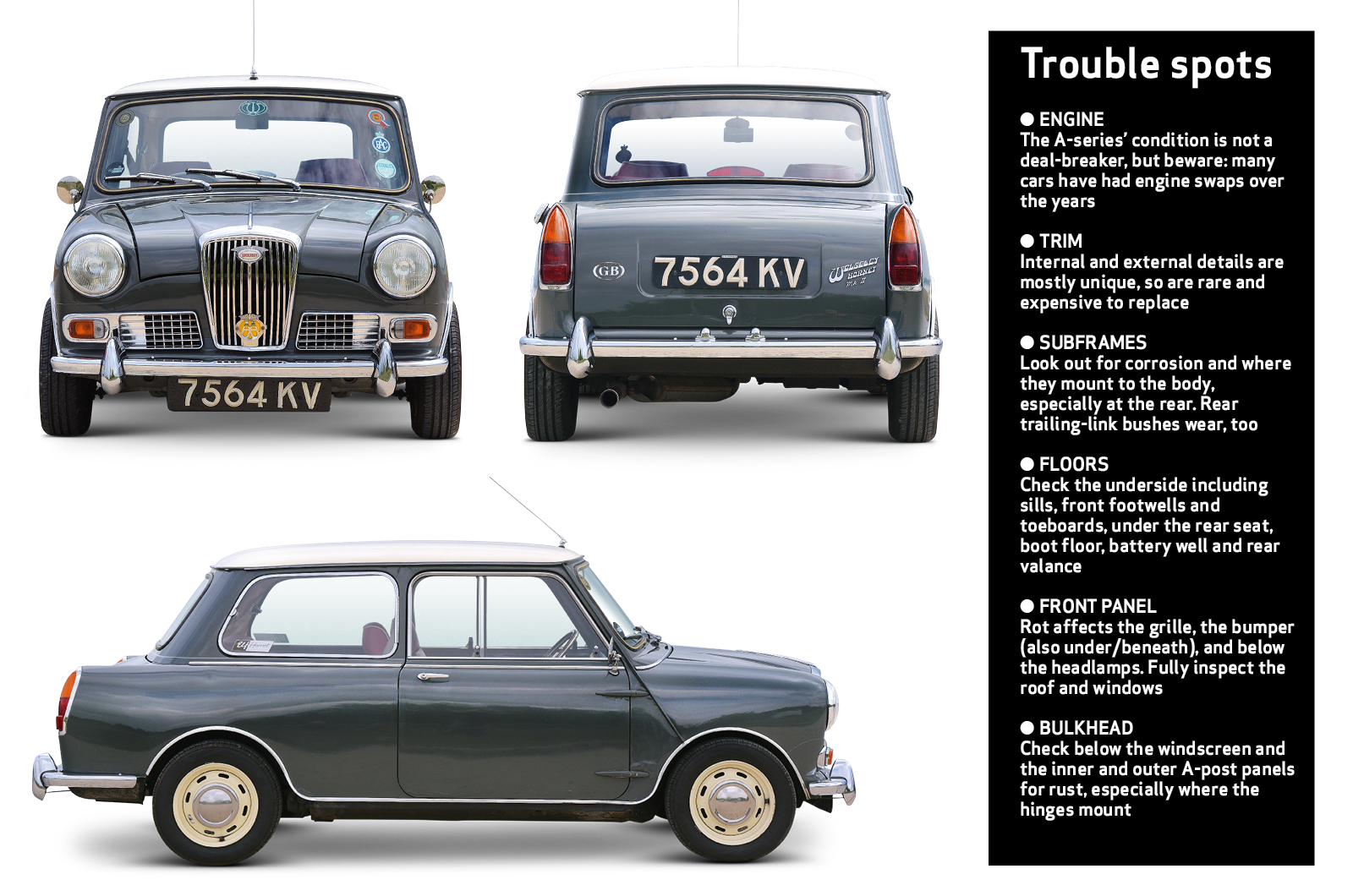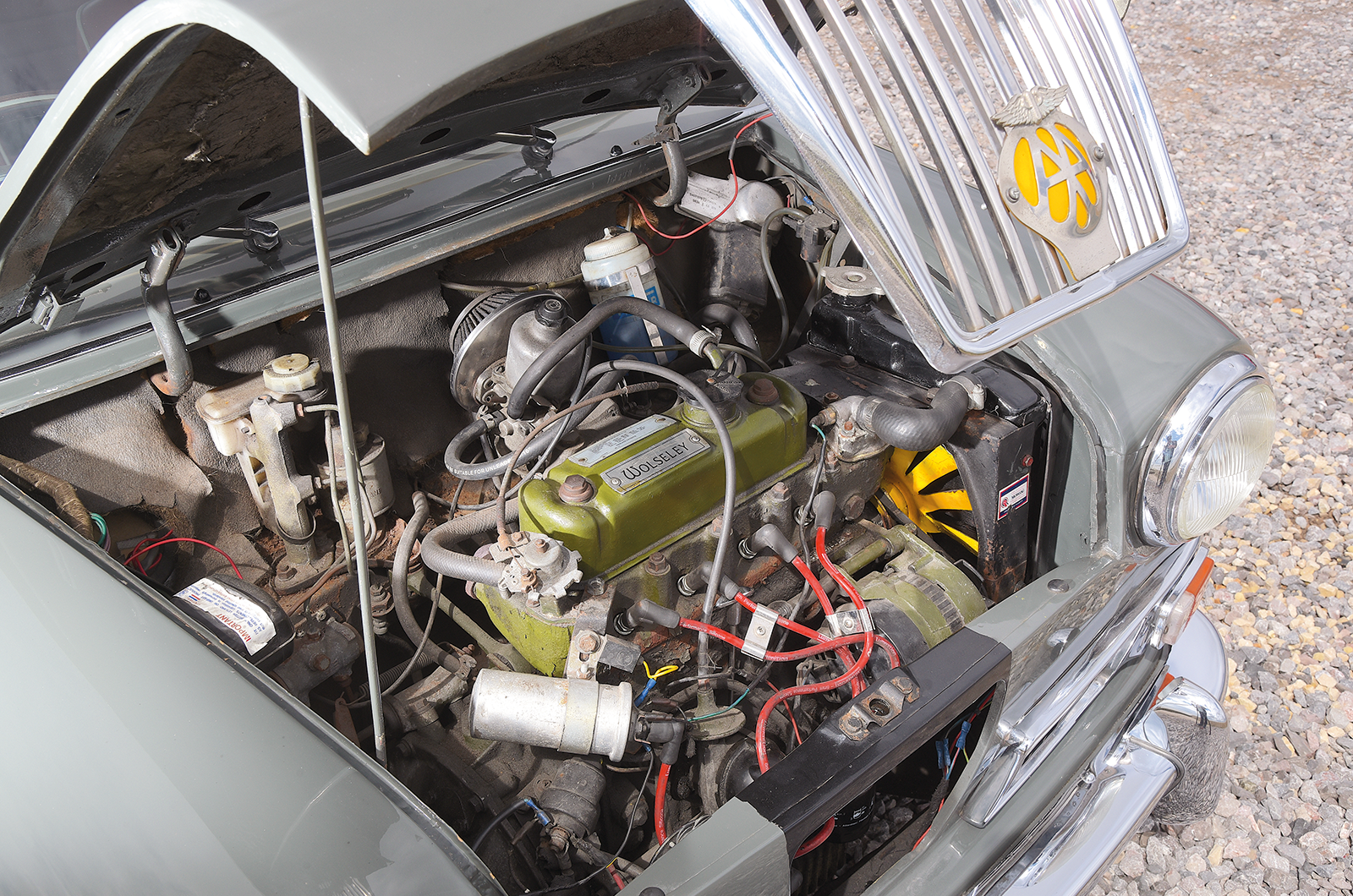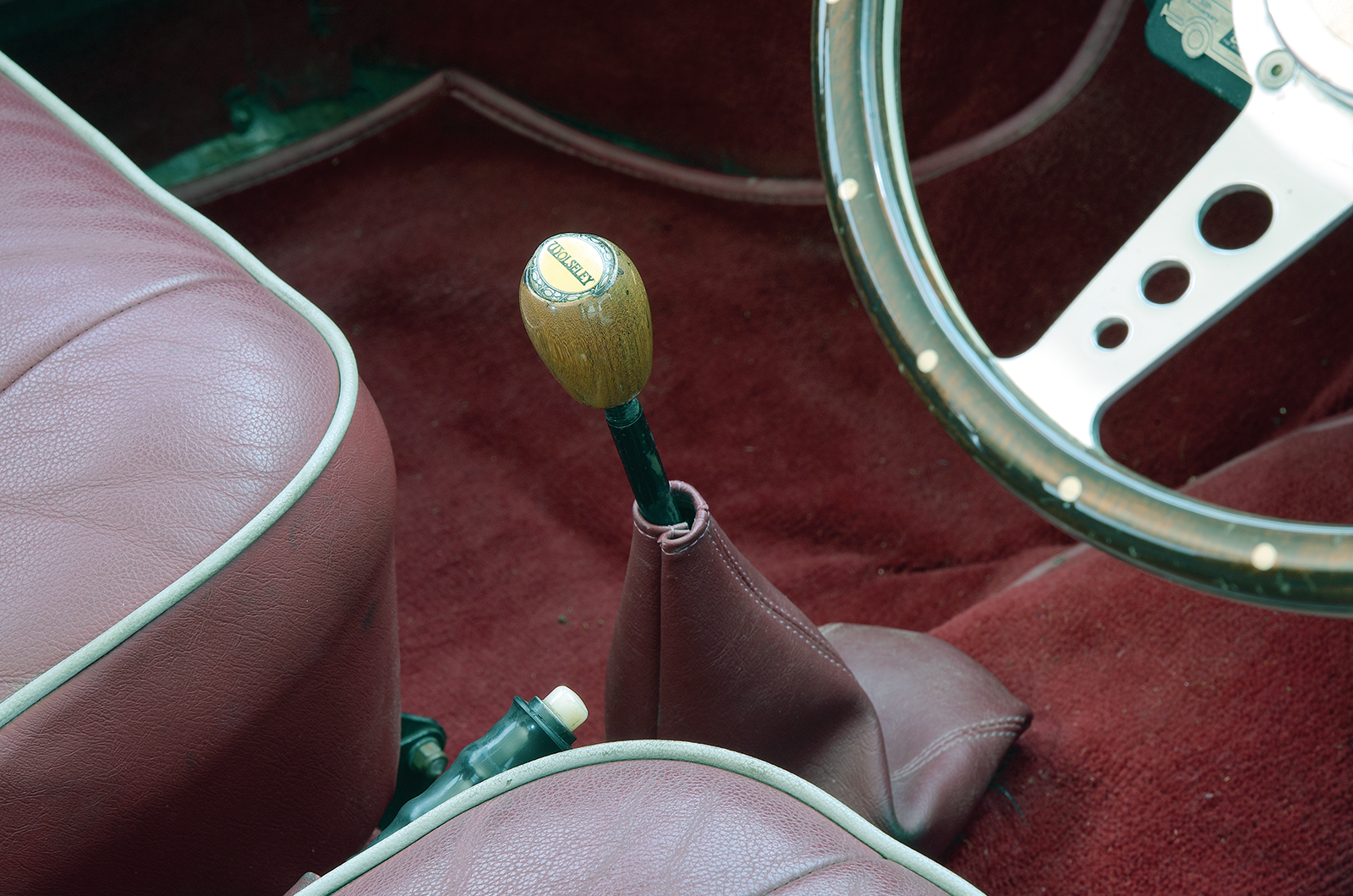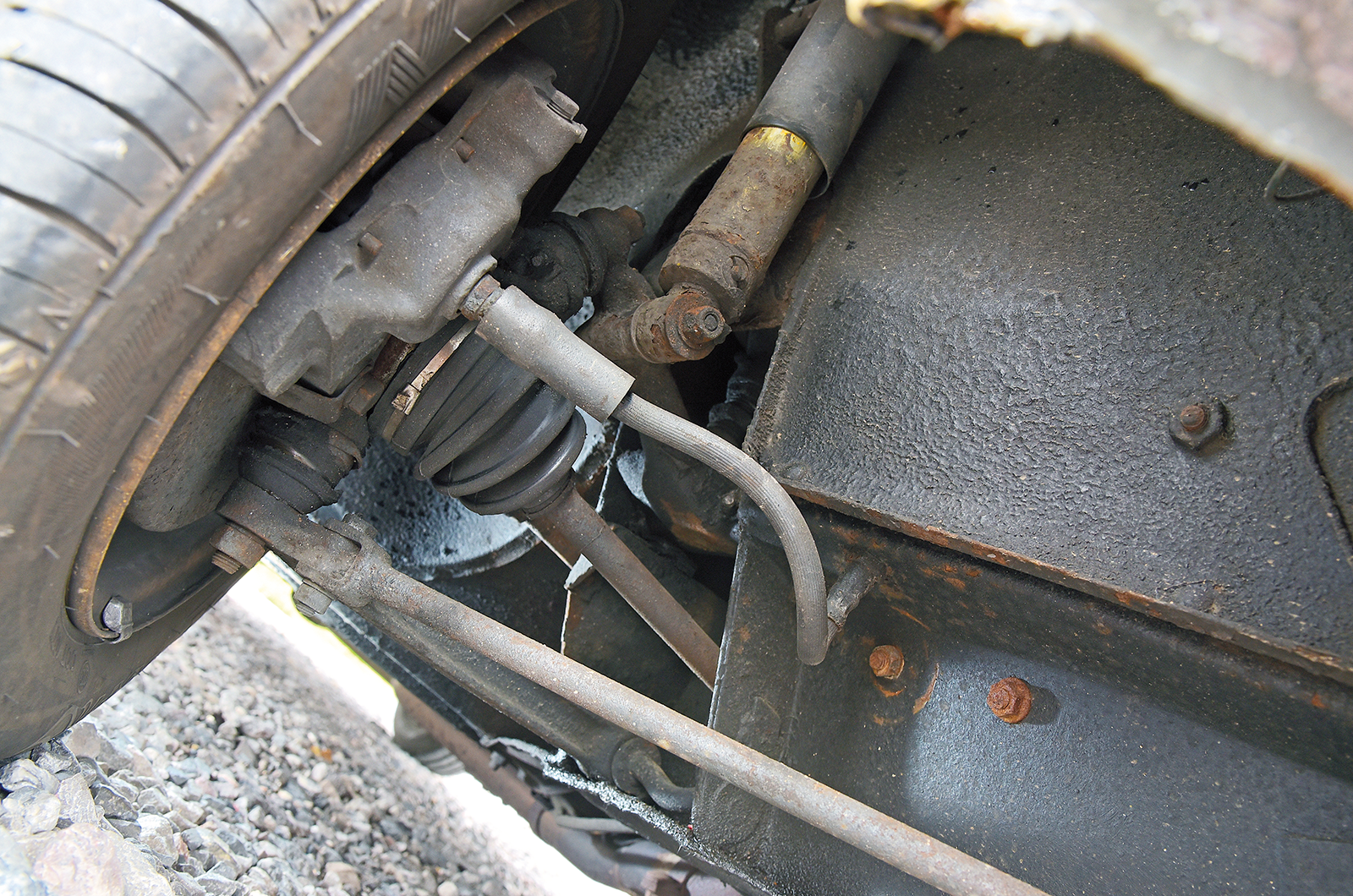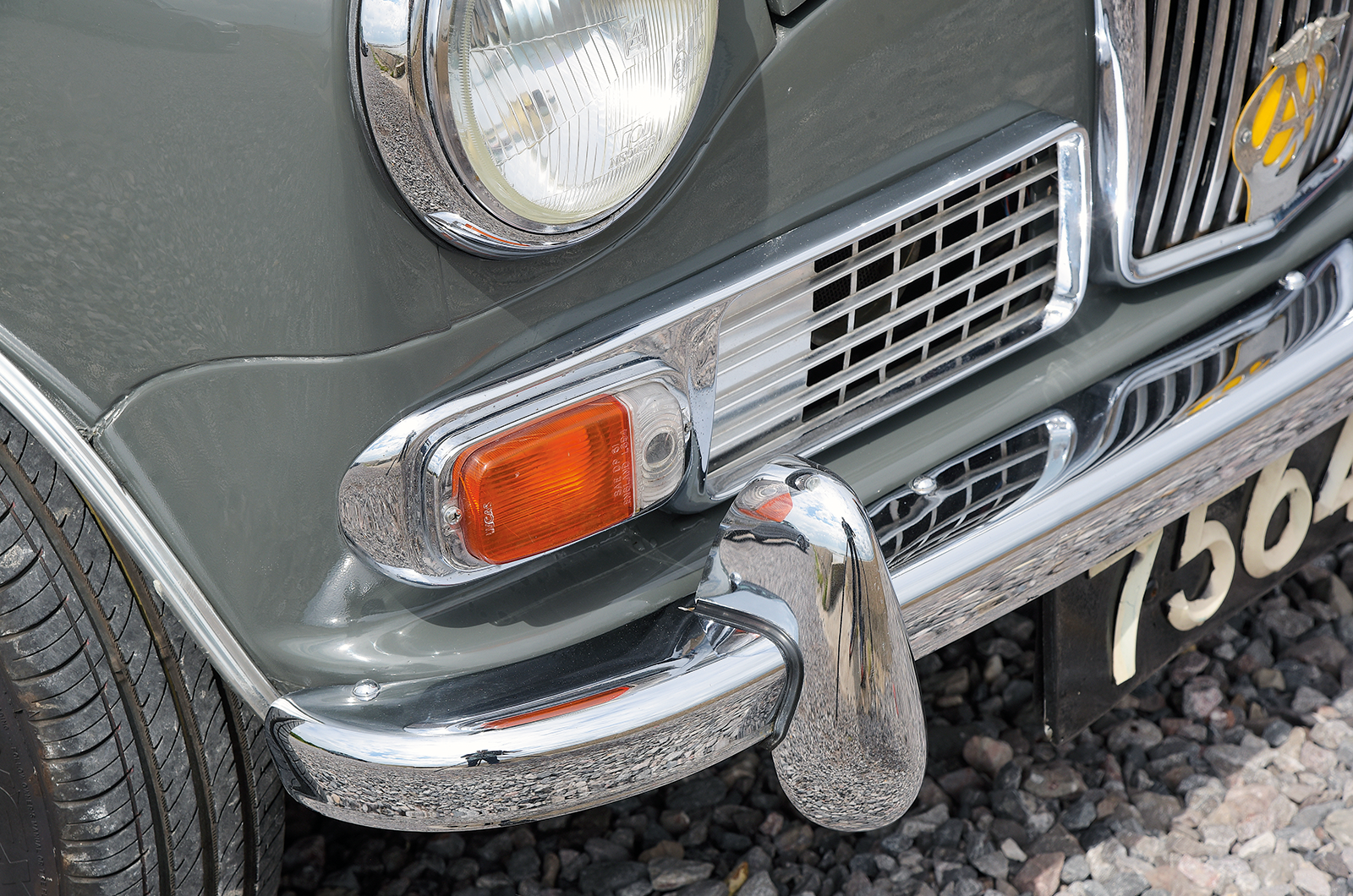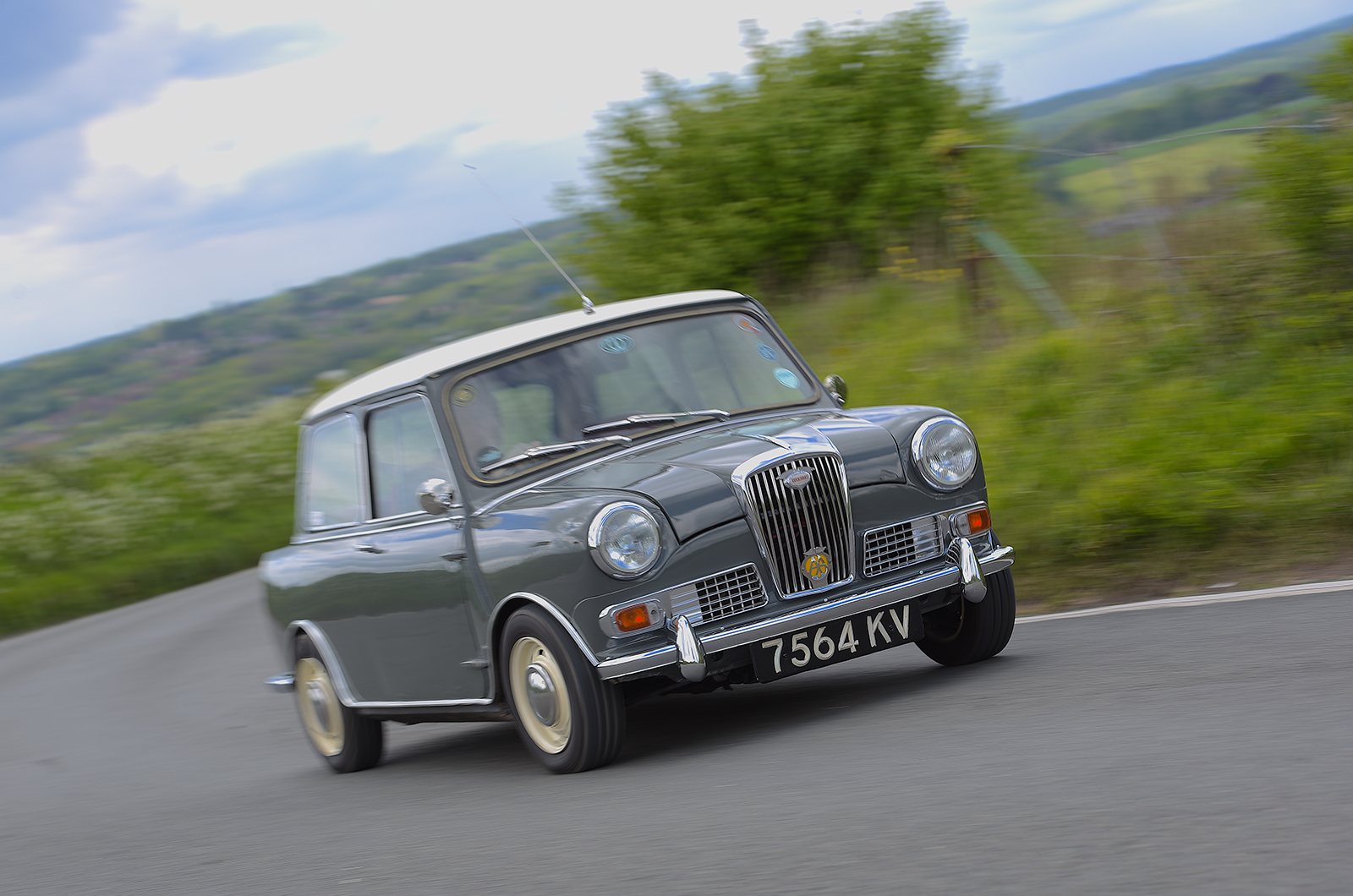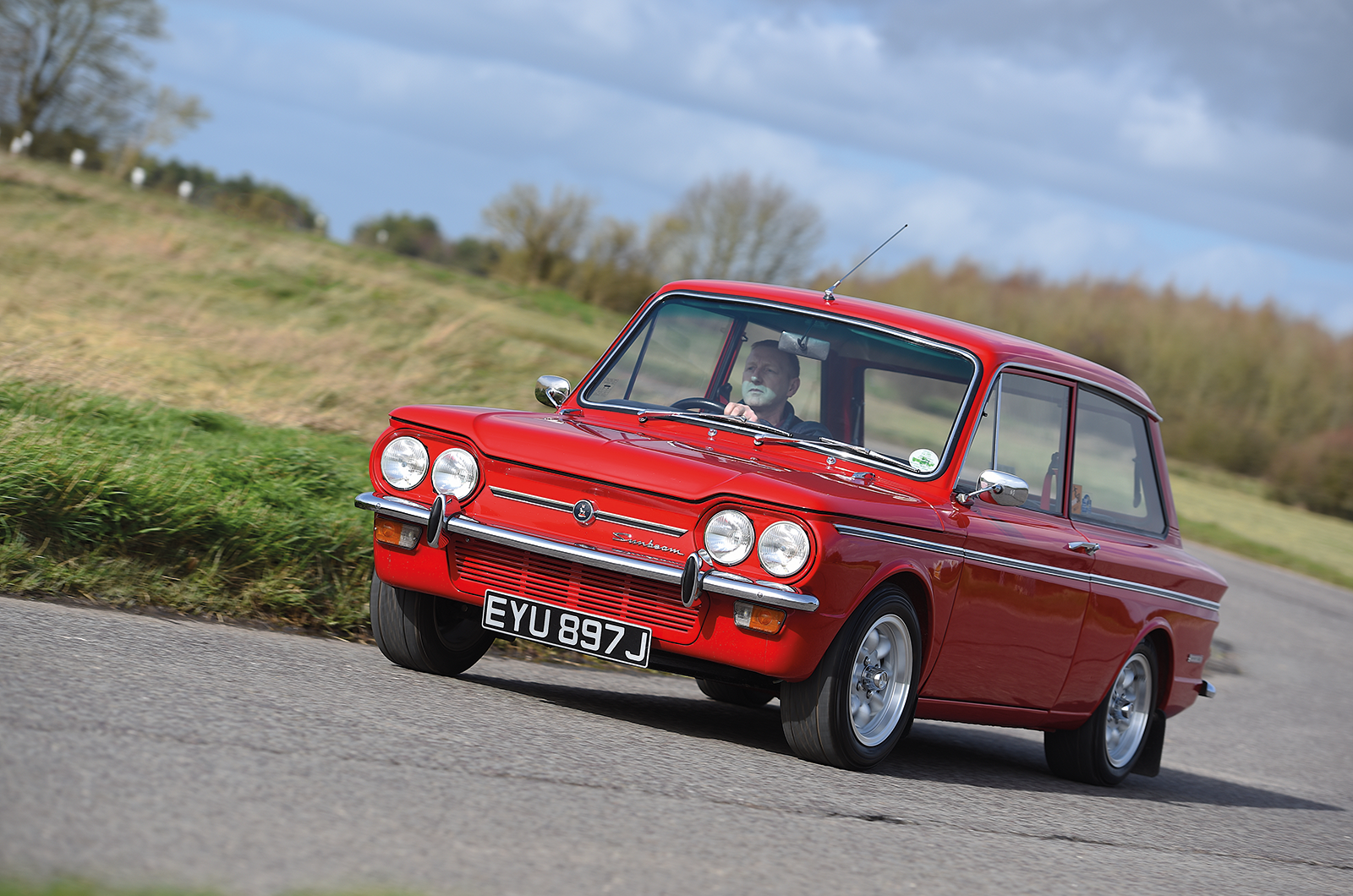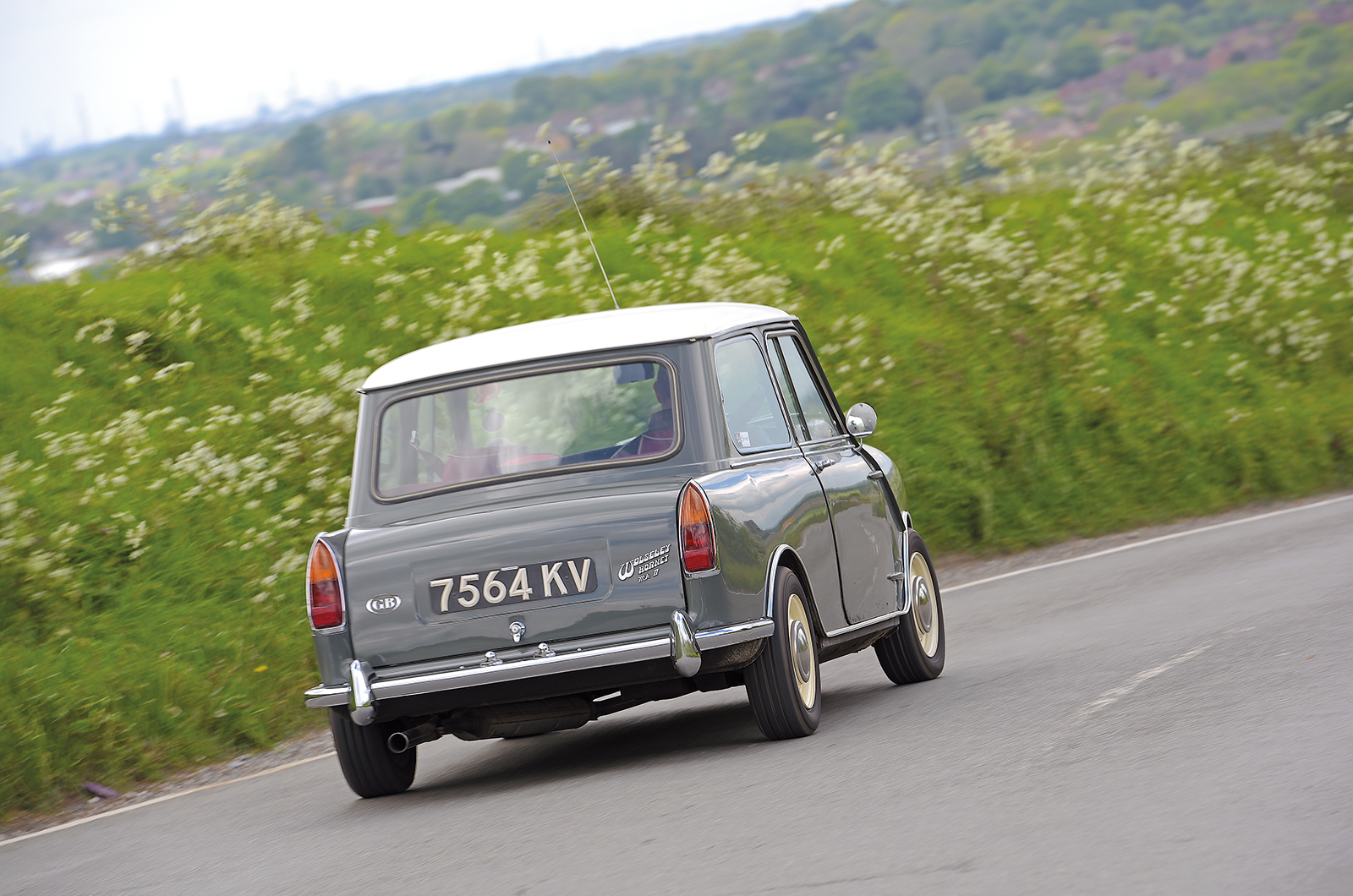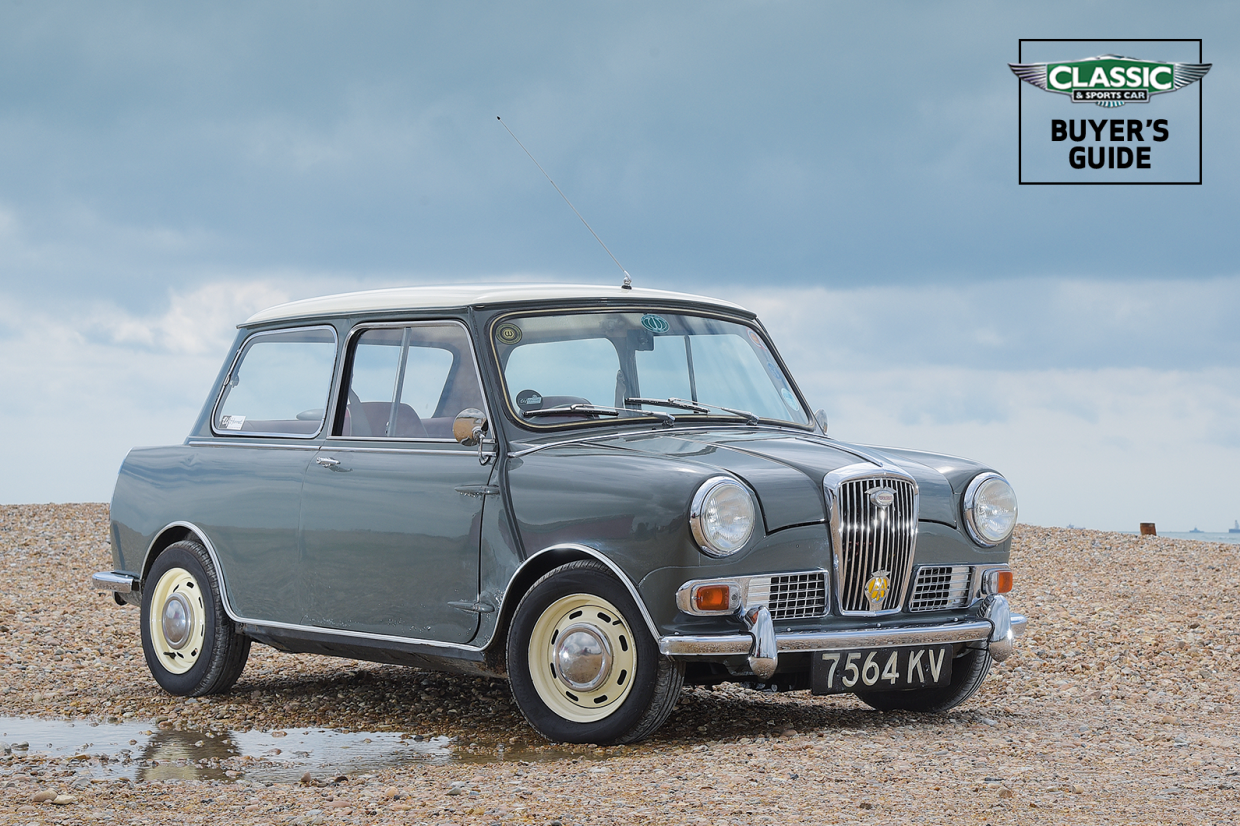
Why you’d want a Riley Elf or Wolseley Hornet
Brand loyalty was a significant factor in the 1950s car market – but mass production was essential to keep costs down.
Struggling to hold on to faithful customers of its once-proud independent brands, the unwieldy British Motor Corporation resorted to ‘badge engineering’ its volume models as multiple car ownership per household increased, hoping to attract wives, sons and daughters to buy a Riley or Wolseley ‘like Dad had’.
With the Mini variants, the cars had the advantage of extra boot space over the base Austin and Morris – though Mini designer Alec Issigonis was less than impressed with the 8.5in extra length added to his packaging miracle.
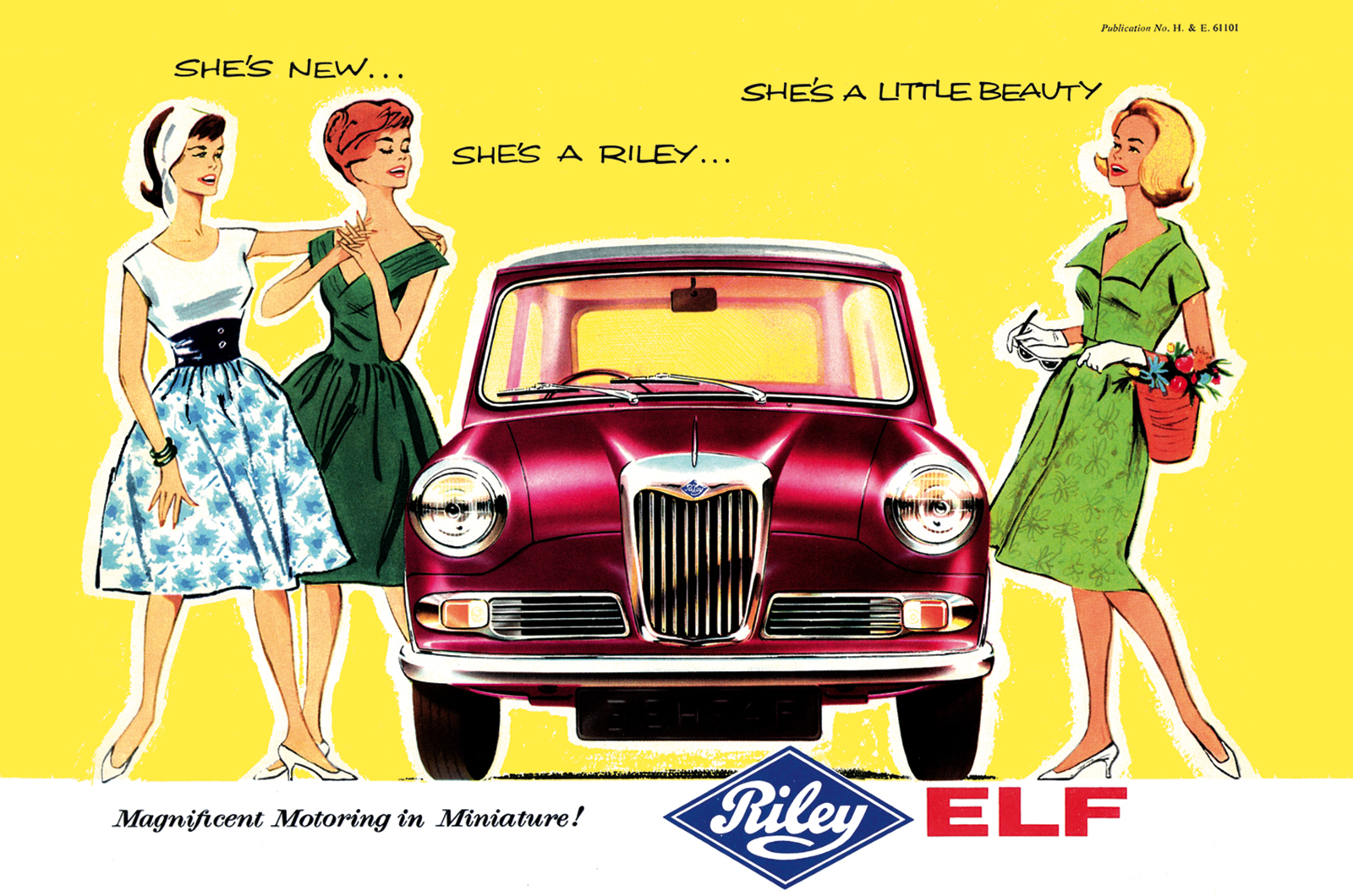
Period catalogue for the Elf has dated slightly
The two cars sold in very similar numbers, with the slightly more expensive Riley marginally more popular than the Wolseley. Unlike the ADO16 series, in which the Riley Kestrel had twin carbs and significantly higher performance than the Wolseley version, the Riley Elf and Wolseley Hornet shared the same single-carb power units.

